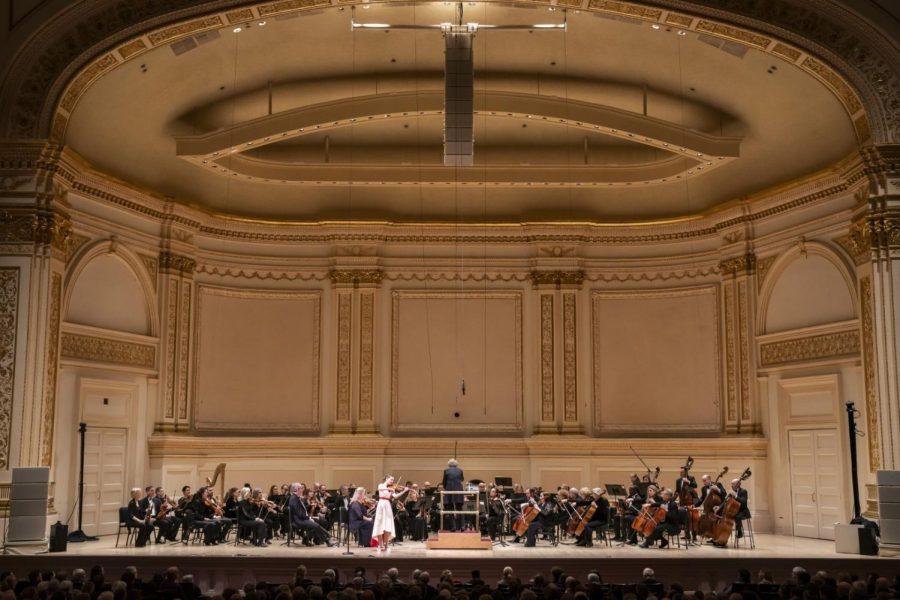5 Pieces That Will Make You Love Classical Music
If you’re reading this, you probably enjoy listening to some kind of rap artist, like Kendrick Lamar, some kind of pop artist, like Justin Timberlake, or perhaps electronic music, funk, 1970s rock, or soul. But there’s an important music era missing from your favorite music list, an era that includes various styles, composers, and interpretations: classical music.
In a recent study, it was determined that less than 15 percent of Americans have a “moderately close” relationship with the classical genre. That’s fewer than one in five people! Yet if you listen to enough classical music, which includes a large span of music from the 1600s – composers like Bach and Vivaldi – to the early 20th Century, including the music of Debussy and Ravel, you’ll see that it is a lot more than just Für Elise and the Four Seasons. This music is far more intricate and profound than any genre like pop, rock, R & B, funk, electronic music, and even jazz. These modern types of music repeat the same sequence of chords over and over again until it drives the listener to absolute insanity. However, in classical music, there are complex motifs which project like the tasty frosting on a black forest cake, while the subtle harmonies serve to create the many distinctive layers underneath.
Classical music is human creativity at its best. Composers during this era were not afraid to take risks, to develop their own unique styles, and, most importantly, to be creative. They were like poets and painters, not like pop singers looking for money and fame. An unbelievable amount of thought and deliberation goes into every single note of any classical piece. Composers like Rachmaninoff, Haydn, Schumann, Stravinsky, and Brahms simply do not receive enough credit for the immense precision of their work. Many of them died young and poor. It is important to appreciate their work instead of letting it go to waste. Unfortunately, many people nowadays do not take the time to appreciate classical music – they listen to one or two minutes of Bach and find it “boring.”
I strongly recommend that you listen to more classical music. Listen for the different layers, the subtle colors, and the impeccable ornamentation. You’ll find that all of the stressors in your life tend to disappear when you have a beautiful composition in your ears. To help you out, I’ve picked out five of my favorites. These pieces have something that Justin Bieber and Taylor Swift cannot possibly provide: true imagination. So close your eyes, relax, and enjoy the music.
1. Frederic Chopin’s Scherzo in B-flat Minor
This scherzo is long, but you do not have to listen to the whole thing to be stunned by it. The introduction begins quite softly, but then it makes you jump in shock when the huge fortissimo chords attack. It’s kind of like a skirmish between the soft, delicate melody and the booming octaves. Chopin engages the listener throughout, since the scherzo takes so many cool twists and turns. It’s the exact opposite of repeating “Watch we whip … watch me nae-nae” over and over again.
2. Franz Liszt’s arrangement of La Campanella (originally by Paganini)
This is a flashy piece that demonstrates some of the stunning things you can do with the piano. Kissin’s performance should convince you that the piano is not just for background chords, like in Bruno Mars’ “Grenade”; instead, it’s a special instrument with huge power. La Campanella is also intriguing because it is not just about fast notes: there is a playful melody that recurs throughout the piece. Each time the melody comes back, Liszt changes it slightly, adding new variations. Can you count the number of variations in the piece?
Evgeny Kissin playing “La Campanella” S. 141 (1851), composed by Franz Liszt. The Royal Albert Hall, London, August 1997.
3. Bach’s Chaconne in D Minor (from Violin Partita No. 2)
There is a reason why Bach is so idolized in the Classical music world: he is the mastermind of musical melody, and form. This piece, which is great to listen to while you do homework or study for a test, is a work of absolute genius. It sounds technically complex but musically simple, with an elegant structure. The many themes all fit together like pieces of a puzzle, forming a satisfying, calming result. You ought to listen to the whole thing – it’s worth it!
4. Beethoven’s Concerto No. 5 (“Emperor”)
This is a long concerto, but, again, it’s worth the time. The themes are rich and colorful, and all of the instruments of the orchestra coalesce to produce a purely supernatural sound while the soloist showcases their virtuosity. It’s surely not a straightforward, elementary concerto, which makes it difficult to comprehend at times. Nevertheless, if you listen with attention, you will be able to pick out all of the fascinating chords and harmonies used throughout the piece.
5. Schubert’s Serenade in D Minor.
This piece is, by far, the simplest of the five. However, music doesn’t have to contain a million notes in order to be the best; in fact, stylish simplicity is often better than turbulent complexity. Schubert’s melody has an incomparable magical charm. Each note follows effortlessly from the previous one as the tune goes up and down like a seagull flying above a beach on a summer day. The extraordinary accompaniment serves as the ocean waves, calmly rising and falling – mostly soft but sometimes loud – as the seagull swoops above. This piece is as close to perfection as music can get.
If you have any classical pieces that you enjoy listening to (and would recommend to others), please leave them in the comments below. I hope this inspires you to perhaps listen to some more Classical music!








Jullian • Nov 19, 2021 at 5:02 pm
Akilan, I have the utmost respect for you.
Akilan Sankaran • Nov 22, 2021 at 3:56 pm
Thanks mate.
ovitt • Nov 19, 2021 at 3:37 pm
Good choices. May I add: Yefim Bronfman’s sublime reading of Rachmaninoff’s Piano Concerto #3 in D, performed with the Vienna Philharmonic, available here. It’ll knock your socks off.
https://www.youtube.com/watch?v=aFkAwFDZGHk
Akilan Sankaran • Nov 22, 2021 at 3:57 pm
Cool! I should have put some Rachmaninoff on here. That concerto is great.